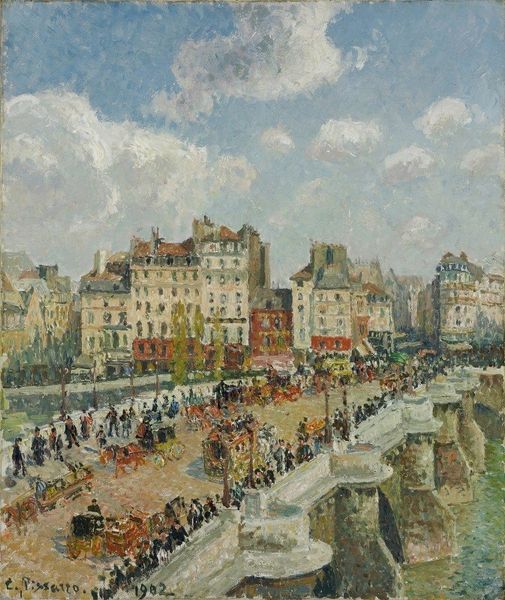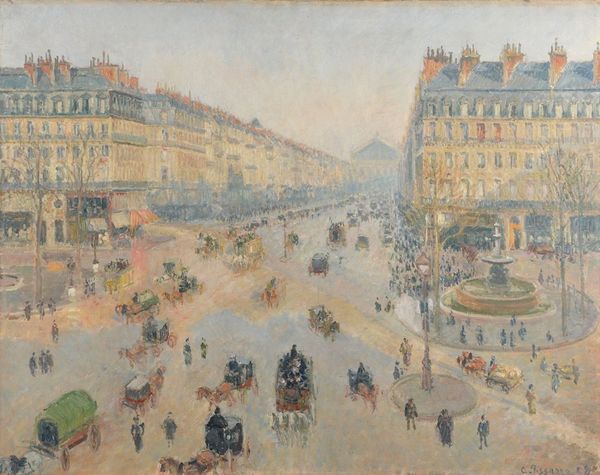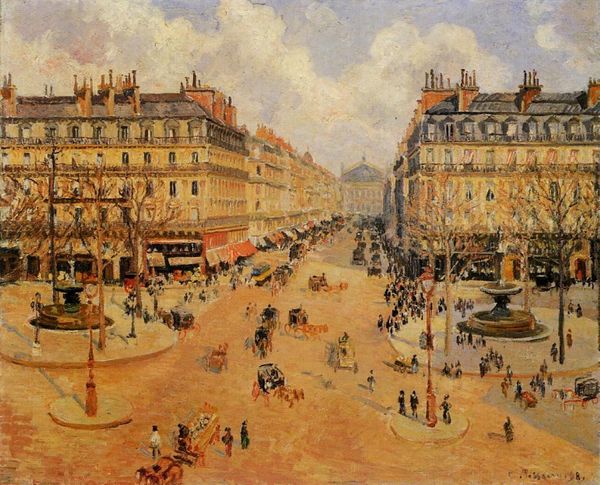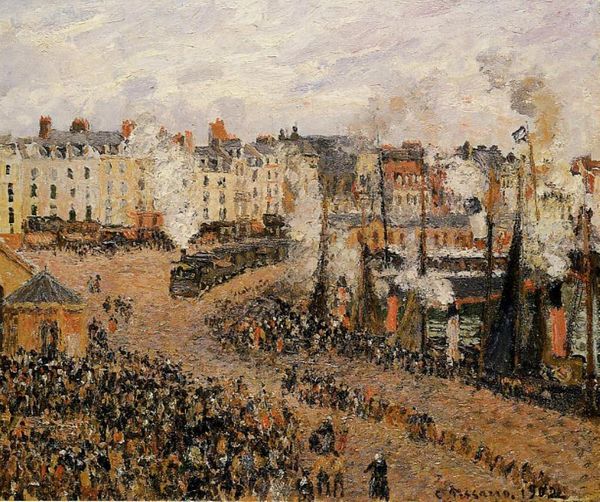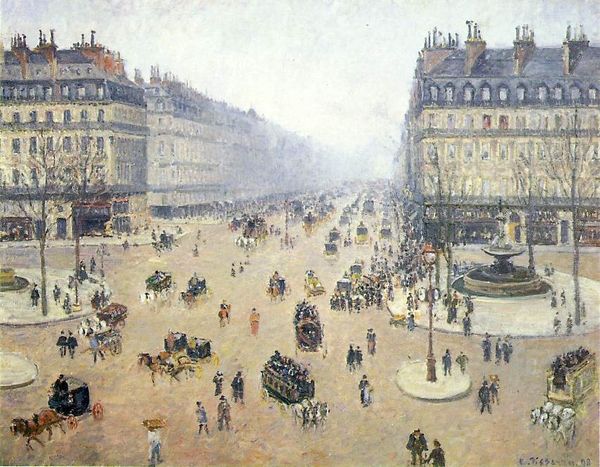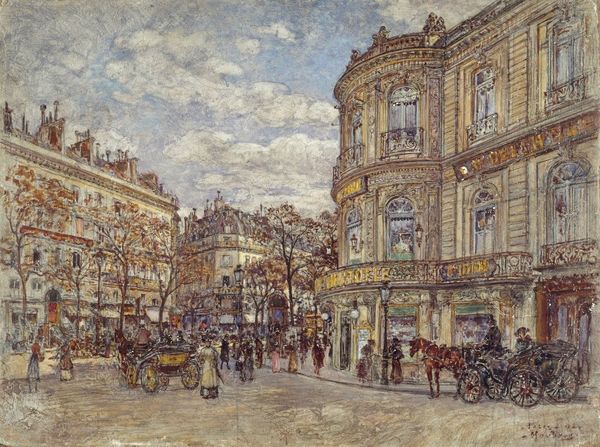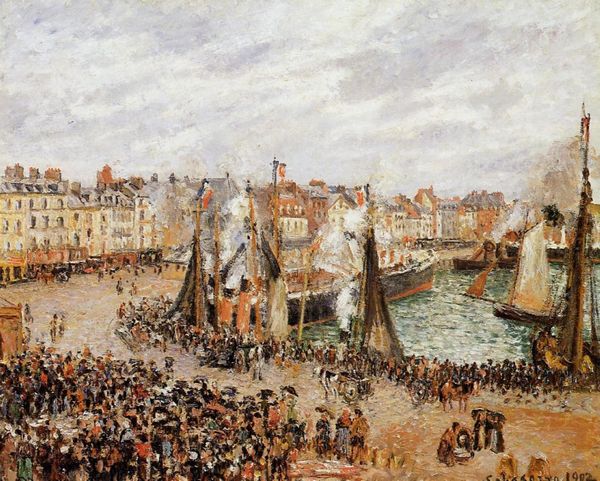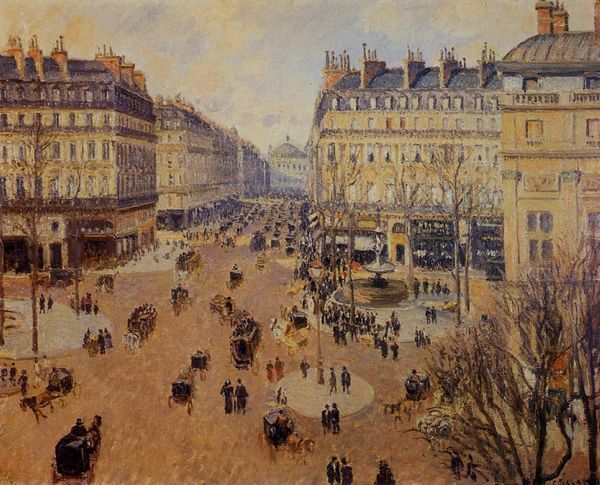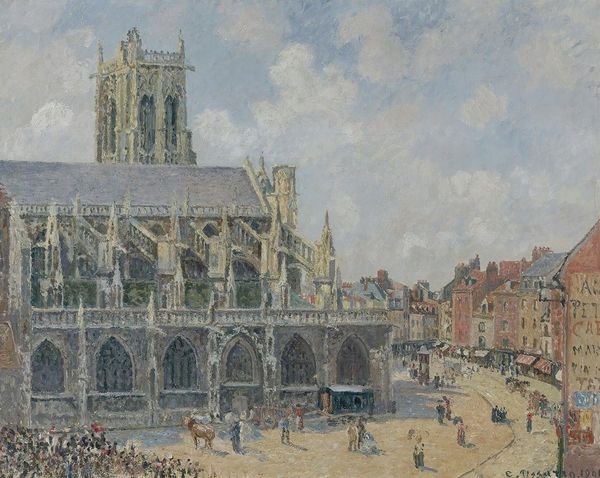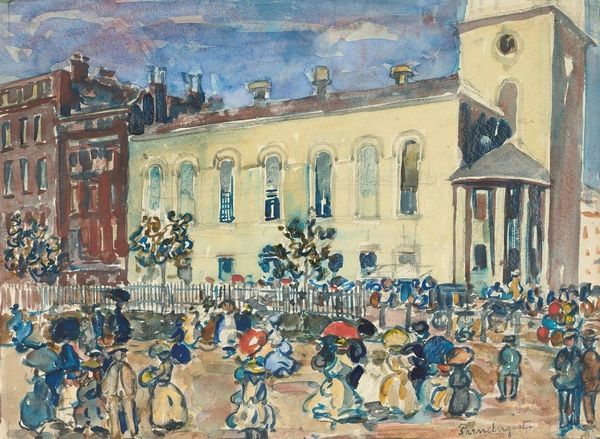
Copyright: Public Domain: Artvee
Curator: Here we have Camille Pissarro's "Fishmarket," painted in 1902, rendered in oil paint. A bustling port scene, full of muted colors and intriguing textures. What’s your first impression? Editor: The entire scene feels shrouded in mist, the figures almost swallowed up in the sheer density of urban life and labor, doesn't it? There's a poignant tension between the solidity of the buildings and the fleeting, ephemeral nature of human activity. I immediately get a very tactile sense from the paint itself; a very heavy piece. Curator: Indeed. Note how Pissarro uses short, broken brushstrokes. This not only captures the atmospheric effects but also constructs form, giving structure to the figures and architecture. Editor: Exactly. It's like he’s built this reality from tiny dabs of color, each one resonating like a chord to create a visual symphony of the port. There's a real sense of movement that carries the eye throughout the entire piece, jumping back and forth along diagonals. Curator: Yes, and the composition itself guides the eye. Pissarro’s elevated viewpoint grants a panoramic perspective. We are invited to follow the flow from the darker foreground teeming with people to the brighter, open space of the harbor and buildings. Editor: I almost feel I could inhale the salt air and hear the clamor of the market from the painting. I imagine Pissarro himself situated in a room with windows that looked over the whole market below. You know, I find something melancholy here—perhaps it's a premonition of how modern life can simultaneously connect us and make us feel alienated. Curator: An insightful reading. While Pissarro’s focus here seems largely occupied with depicting light and activity, one can certainly extrapolate themes of modern life. The semiotic potential is abundant, don’t you think? Editor: I always appreciate how Pissarro embraces these everyday scenes as being something of significance; ennobling the people. The Post-Impressionists were brilliant at taking these working environments and transforming them. Pissarro especially could somehow convey these complicated feelings that make you at once very alive and profoundly alone. Curator: It’s a remarkable skill to invest the mundane with such emotional depth, isn’t it? This vista gives an insight into the complex relationships between art, work, and urban experience in the 19th Century. Editor: So true. For me, this isn't merely a representation of a market, but rather a poignant, slightly blurry mirror reflecting humanity’s delicate dance between progress and preservation.
Comments
No comments
Be the first to comment and join the conversation on the ultimate creative platform.
